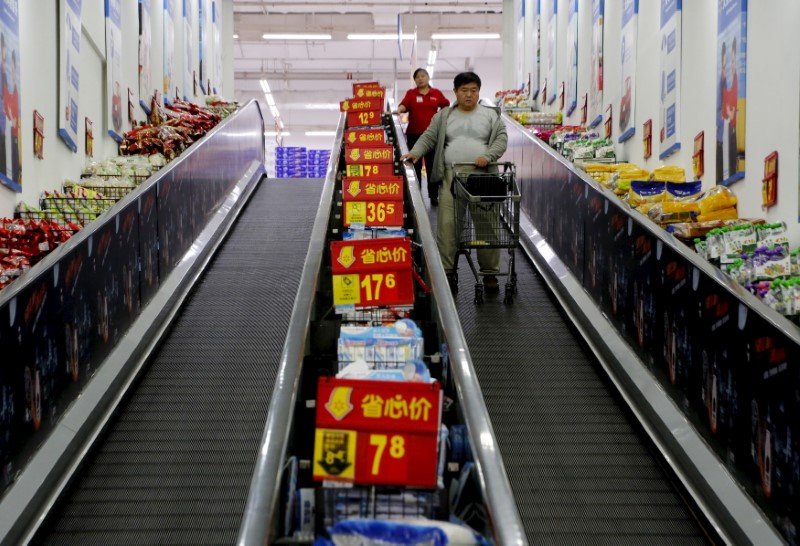(Bloomberg) -- An official gauge of activity in China’s manufacturing sector rose faster that expected in November, suggesting the economy’s recovery is gathering pace toward the end of the year.
- The manufacturing purchasing managers’ index rose to 52.1 in November from 51.4 in the previous month, according to data released Monday by the National Bureau of Statistics. That was the highest since September 2017 and beat the 51.5 median estimate in a Bloomberg survey of economists
- The non-manufacturing gauge climbed to 56.4 from October’s 56.2, exceeding the median forecast of 56. Readings above 50 indicate improving conditions from the previous month
Key Insights
- The data suggest China’s steady recovery momentum continued into the last quarter of the year, with manufacturing holding up despite sporadic outbreaks of coronavirus in China
- Domestic and global demand is being buyoyed by year-end holiday purchases, Qian Wang, chief Asia-pacific economist at Vanguard Group Inc, said on Bloomberg TV. Momentum could start easing a bit in coming months, Wang said
- A set of early indicators showed China’s economic recovery stabilized in November, underpinned by exports and the stock market’s gain to its highest since 2015
- China is rolling out measures to support domestic consumption, including of autos and home appliances, helping to underpin the recovery
- The recovery in manufacturing is still uneven, according to Zhao Qinghe, an economist with the statistics bureau. Some businesses said profits and export orders are coming under pressure because of the stronger yuan, Zhao said in a statement released with the data
- A resurgence in coronavirus cases globally could also weigh on export orders if lockdowns are extended, said Iris Pang, chief Greater China economist at ING Groep (AS:INGA) NV. “China manufacturing PMI jump was mostly due to more domestic new orders and an increase in raw material prices,” she said
What Bloomberg Economics Says
“Looking ahead, the strength is expected to extend into year-end and into the start of the new year. A stronger economy would allow the People’s Bank of China to begin a transition back to a neutral monetary policy stance -- though a move away from a pro-growth stance is likely to a gradual and long process.”
-- Chang Shu, chief Asia economist
For full report, click here.
Get More
- A sub-index of new export orders for factories rose to 51.5 from 51 in October, while new orders jumped
- A sub-index of manufacturing employment rose to 49.5 from 49.3 in October, while non-manufacturing employment eased to 48.9
(Updates with comments from economists.)
©2020 Bloomberg L.P.
